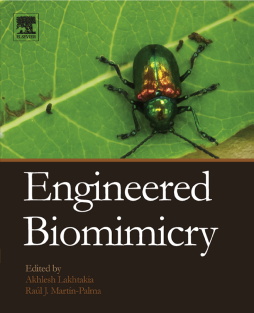
Additional Information
Book Details
Abstract
Engineered Biomimicry covers a broad range of research topics in the emerging discipline of biomimicry. Biologically inspired science and technology, using the principles of math and physics, has led to the development of products as ubiquitous as Velcro™ (modeled after the spiny hooks on plant seeds and fruits). Readers will learn to take ideas and concepts like this from nature, implement them in research, and understand and explain diverse phenomena and their related functions. From bioinspired computing and medical products to biomimetic applications like artificial muscles, MEMS, textiles and vision sensors, Engineered Biomimicry explores a wide range of technologies informed by living natural systems.
Engineered Biomimicry helps physicists, engineers and material scientists seek solutions in nature to the most pressing technical problems of our times, while providing a solid understanding of the important role of biophysics. Some physical applications include adhesion superhydrophobicity and self-cleaning, structural coloration, photonic devices, biomaterials and composite materials, sensor systems, robotics and locomotion, and ultra-lightweight structures.
- Explores biomimicry, a fast-growing, cross-disciplinary field in which researchers study biological activities in nature to make critical advancements in science and engineering
- Introduces bioinspiration, biomimetics, and bioreplication, and provides biological background and practical applications for each
- Cutting-edge topics include bio-inspired robotics, microflyers, surface modification and more
"Chemical, electrical, and mechanical engineers explain the basic process of mimicking biological systems to achieve certain goals, and illustrate them with some recent examples. Among their topics are noise exploitation and adaptation in neuromorphic sensors, biomimetic robotics, surface modification for bio-compatibility, biomimetic anti-reflection surfaces…"--Reference & Research Book News, October 2013
